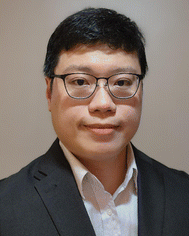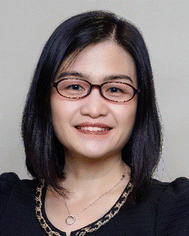Introduction to emerging materials for solar energy harvesting
Joel M. R.
Tan
 a,
Frank E.
Osterloh
a,
Frank E.
Osterloh
 b and
Lydia
Wong
b and
Lydia
Wong
 *a
*a
aSchool of Materials Science and Engineering, Nanyang Technological University, Singapore. E-mail: lydiawong@ntu.edu.sg
bDepartment of Chemistry, University of California, Davis, USA
In this themed edition of Journal Materials Chemistry A, organized in collaboration with the ICMAT 2023 Symposium O, we present innovative work at the forefront of materials research aimed at addressing the carbon crisis. This includes experimental works, reviews, and perspectives on carbon dioxide reduction, photovoltaics, hydrogen evolution photocatalysis and water oxidation electrocatalysis. The studies span a large spectrum of materials, ranging from metals to oxides, sulfides, selenides, halides, Kesterites, nitrides, oxynitrides, and perovskite-inspired materials.
In overall water splitting as a pathway to green hydrogen fuel, several advances are highlighted. In one contribution, Ji-Hyun Jang and coworkers review developments on heteroatom-doped hematite for photoelectrochemical water oxidation (https://doi.org/10.1039/D3TA04520J). This is followed by a perspective by Kazunari Domen and coworkers on cost-effective solar hydrogen production with photocatalyst sheets (https://doi.org/10.1039/D3TA04353C). Separately, Qian Wang and coworkers review methods to improve the photocatalytic hydrogen evolution efficiency of covalent triazine frameworks (https://doi.org/10.1039/D3TA04472F). Oxynitride materials are attractive photocatalysts for water splitting, and accordingly, Kazuhiko Maeda and coworkers demonstrate that the transformation of K2LaTa2O6N into nanosheets enhances catalytic hydrogen evolution (https://doi.org/10.1039/D3TA01387A). While most photoanode studies focus on solar irradiation conditions, Sophia Haussener and coworkers study the function and stability of Sn-doped Fe2O3 and BiVO4 photoelectrochemical cells under high-irradiance (https://doi.org/10.1039/D3TA05257E). Water electrolysis in combination with photovoltaics offers higher efficiencies, but stable and inexpensive electrocatalysts are lacking. In their paper, Chuan Zhao and coworkers explore the factors that limit the stability of FeNiCr and FeNi oxygen evolution electrocatalysts under industrial conditions (https://doi.org/10.1039/D3TA03905F). Along similar lines, Roland Marschall and coworkers demonstrate Ni2FeS4 as a non-precious-metal hydrogen evolution co-catalyst in combination with TiO2 (https://doi.org/10.1039/D3TA02439C). Lastly, report from Ong Wee-Jun’s group identifies the morphology–activity relationship in ZnIn2S4 photocatalysts for hydrogen evolution coupled to benzyl alcohol oxidation (https://doi.org/10.1039/D3TA04204A).
Key to improved photovoltaics is the expansion of the material library and the development of new materials as superior solar absorbers. Reports include a comprehensive study on combinatorial sputtering and theoretical calculations in the Ba–Sn–S ternary phase system, identifying promising candidates for optoelectronic applications (https://doi.org/10.1039/D3TA04431A). The exploration of intrinsic defects and hydrogen impurities in Zn3P2 through hybrid functional calculations reveals subtle yet beneficial impacts on its electrical properties (https://doi.org/10.1039/D3TA03697A). In the quaternary I2–II–IV–X4 system, efforts to mitigate anti-site defects are discussed, with a focus on alkali element doping in Cu2BaGe1−xSnxSe4 films (https://doi.org/10.1039/D3TA01494K). Ding-Jiang Xue and coworkers show that copper can replace gold as the electrode material in selenium photovoltaics to yield efficiencies of up to 10.4% under indoor illumination (https://doi.org/10.1039/D3TA04530G). Additionally, Robert Hoye and coworkers highlight the promising applications of bismuth sulfobromide (BiSBr) in indoor photovoltaics and optoelectronics (https://doi.org/10.1039/D3TA04491B). Innovative syntheses of antimony chalcohalides to produce photovoltaics with high open-circuit potential are provided by Edgardo Saucedo and coworkers (https://doi.org/10.1039/D3TA03179A). It is also shown that prebaking of a SnS source with sulfur can achieve higher performance in SnS solar cells (https://doi.org/10.1039/D3TA05204D) and that doping of silver into Cu2CdSnS4 leads to doping-type inversion (https://doi.org/10.1039/D3TA04529C). Finally, a review article by Marit Kauk-Kuusik and others focuses on flexible PV solar cells from Cu2ZnSnS4 (CZTS) monograin layers (https://doi.org/10.1039/D3TA04541B).
Improved photovoltaic performance is achieved by improving overall device design. For example, in antimony-based solar cells, InCl3-modified SnO2 improves both electron transport and the quality of the heterojunction (https://doi.org/10.1039/D3TA03358A). It is also shown that incorporation of InOCl layers between the In2S3 buffer layer and the Sb2(S,Se)3 absorber reduces defects and allows higher conversion efficiency (https://doi.org/10.1039/D3TA01736B). An improved photovoltaic efficiency of 8% is achieved by combining hydrothermal deposition with vapor transport to grow Sb2(S,Se)3 films with graded bandgaps (https://doi.org/10.1039/D3TA05489F).
The potential of photovoltaic semiconductors in photoelectrochemical water splitting is further explored. CZTS’s performance and stability in PEC applications have been examined by one of us, particularly the role of ITO interface modifications between buffer layers and catalysts (https://doi.org/10.1039/D3TA05227C). With antimony selenide, solution treatments boost photocathode performance for hydrogen generation, as reported by David Tilley and coworkers (https://doi.org/10.1039/D3TA00554B).
Finally, we address direct carbon conversion and CO2 removal for fuel production. In one contribution, Lydia Wong and coworkers show that electrochemical CO2 reduction to CO is improved by replacing Sb sites with sulfur in Cu–Sb–S photocathodes (https://doi.org/10.1039/D3TA04777F). In another paper by Lianzhou Wang and coworkers, they emphasized the influence of carbon contamination on product analysis for catalytic CO2 reduction (https://doi.org/10.1039/D3TA00834G). Finally, using Sn as a growth surfactant to mitigate oxygen and carbon impurities, Ann Greenaway and coworkers showed single-crystal-like Sn:ZnTiN2 films with improvements to optoelectronics properties, aiming to advance photoelectrochemical CO2R performance (https://doi.org/10.1039/D3TA06200G).
We hope that this themed issue on emerging materials for solar energy harvesting in the Journal of Materials Chemistry A will not only provide readers with new insights, but also stimulate new ideas. We thank all the contributing authors, reviewers, and editorial and production staff for making this themed issue possible.
| This journal is © The Royal Society of Chemistry 2024 |



![[thin space (1/6-em)]](https://www.rsc.org/images/entities/char_2009.gif) 000 citations, based on the Web of Science, and his
000 citations, based on the Web of Science, and his 